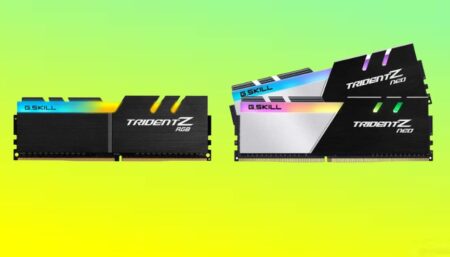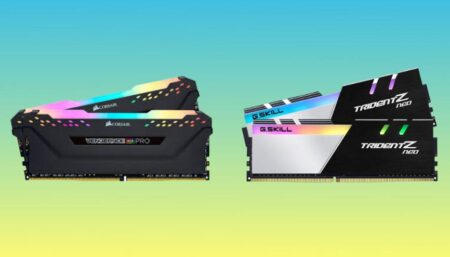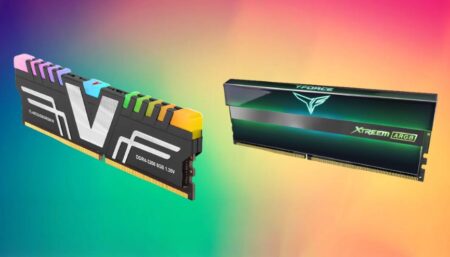
It is important to note that RAM (also known as memory) is one of the most important components in determining the speed of your computer and its performance. You may have RAM issues if your computer’s speed (or slowness) is leaving you cold. It may be that your computer’s processor is too slow to handle today’s more powerful applications if it’s two to four years old. You can start thinking about building your computer. You should upgrade your RAM.
Your computer can’t run apps or perform other processes without being able to store and quickly access data. How does RAM work, and what does it do? You can optimize your computer’s RAM to ensure smooth, fast performance. Whether you’re looking to purchase a new computer or want to speed up your existing computer, knowing what RAM is and how much memory you need is crucial. The following article explains what RAM does on your Mac or Windows computer and how to determine how much memory you have. Each and everything will explain RAM as follows.
History of RAM
Firstly, the RAM was introduced by the Williams tube in 1947. The CRT(cathode ray tube) was used to store data as electrically charged spots on the face. In 1947, the second type of ram magnetic-core memory was also introduced and developed up until the mid-1970s. The RAM that we know today was invented by Robert Dennard at IBM’s Thomas J Watson Research Center in 1968. Intel introduced its first DRAM in October 1969. It was its first commercially available DRAM. RDRAM was available for computers in 1999. DDR2 SDRAM and DDR3 SDRAM were invented in 2007. Now the latest RAM, DDR4, is available on the market.
What is RAM?
RAM stands for random access memory. Random access means that each byte in the entire memory can be accessed directly. While data and instructions are being executed, they are temporarily stored in RAM. It is also called “direct access memory” due to easy access to the CPU in a system. The CPU reads/writes data from RAM. RAM is the main component of a computer system, so it is called main memory.
Ram is a volatile memory. Volatile means that the computer system is powered off, the RAM will be empty, and all data will be deleted from it. It is much faster than data on a hard disk, SSD, or another long-term storage device. Every computing device has RAM, whether it’s a desktop computer, tablet, smartphone, or even an Internet of Things device (such as a smart TV). Ram is small, both in terms of its physical size and the amount of data it holds.
How does RAM work?
This is the most obvious topic to understand: how does RAM work? I discussed some things about the RAM above, but for the details on what exactly the RAM does, I explained it here. RAM is working to allow us as much lightning-fast data as possible, which makes it ideal for the processes, apps, and programmes your computer is actively working on. like data needed to surf the Internet with your web browser. RAM is used to store data immediately and process information hundreds of times faster than your data on a hard disk.
For a specific task to be completed, the operating system of the computer loads data from the hard drives into the RAM to process. After you finish working with that data, the operating system converts it into permanent storage.When you open any applications like Microsoft Word, your computer loads them into RAM. If you opened any saved document on your computer, the operating system searched for the document on the hard drive and loaded it into the RAM. When data loads into the RAM, it gives you great performance because the RAM is fast as a light.
Types of RAM
There are two types of integrated RAM chips. Static RAM (SRAM) and Dynamic RAM (DRAM) Both types of RAM lose their data when they are powered off.
1)Static RAM (SRAM):
This type of RAM requires constant power to store the data and information, but it doesn’t need to be refreshed constantly; it is a volatile memory, and it is used to build cache memory. SRAM requires many transistors to keep one bit of data. In the SRAM, transistors act as the switch instead of a capacitor, in which one position performs as 0 and the other position is 1. SRAM is faster than the Dram and uses less power.
2)Dynamic RAM (DRAM):
DRAM (dynamic random access memory) is a common type of RAM that is used in computing devices such as personal computers (PCs), workstations, and servers. Dynamic RAM stores every bit of data in a separate cell. Random access allows the processor to access any part of the memory without following any sequence. DRAM has one transistor and one capacitor on every bit, but these transistors and capacitors are too small. Millions of transistors and capacitors fit on a single chip. There are mainly 3 types of DRAM:
- Asynchronous DRAM (ADRAM) This is the older version of DRAM used in the first personal computer. It is called “asynchronous” because the system clock does not coordinate or synchronize the memory access. In this case, the value appears on the input/output bus after a certain time. It minimizes the speed; therefore, it is best for low-speed systems and not for high-speed memory systems.
- Synchronous DRAM (SDRAM) This type of DRAM is directly synchronized with the CPU’s clock. In this case, the CPU knows the exact number of cycles for which the value of the data will appear on the input/output bus. It increases the read and write speeds. The modern system uses synchronous DRAM because it is faster than asynchronous DRAM and normal DRAM.
- Double-Data-Rate SDRAM (DDR SDRAM) It is the faster version of the SDRAM that allows for data transfers on both edges of the clock cycle, effectively doubling its speed. whereas the data rate is double, the memory cells are divided into two groups, and both groups are accessed separately.
| Difference between SRAM and DRAM are as follows: | |
| SRAM | DRAM |
| It stores information as long as the power is supplied. | It stores information as long as the power is supplied or a few milliseconds when power is switched off. |
| It uses transistors to store information in SRAM. | In the DRAM Capacitors are used to store data. |
| SRAM is faster compared to DRAM. | DRAM provides slow access speeds. |
| These are expensive. | These are cheaper. |
| These are used in cache memories. | These are used in main memories. |
| It does not have a refreshing unit. | It has a refreshing unit. |
Conclusion:
RAM is one of the most important components in determining the speed of your computer and its performance. RAM stands for random access memory. Random access means that each byte in the entire memory can be accessed directly. Every computing device has RAM, whether it’s a desktop computer, tablet, smartphone, or even an Internet of Things device (such as a smart TV). The workings of RAM allow us to access as much lightning-fast data as possible, which makes it ideal for the processes, apps, and programmes your computer is actively working on.
There are two types of RAM: static RAM (SRAM) and dynamic RAM (DRAM). Static RAM requires constant power to store the data and information; SRAM is faster than Dram and uses less power. DRAM also requires constant power to store the data and information. There are mainly three types of DRAM, which we discussed above: Asynchronous DRAM (ADRAM), which is best for low-speed systems; Synchronous DRAM (SDRAM), which is used in modern systems because it is fast; and Double-Data-Rate SDRAM (DDR SDRAM), which is faster than the ADRAM and SDRAM.





![DDR4 vs DDR5 RAM [2024]](https://www.ingameloop.com/wp-content/uploads/DDR4-vs-DDR5-450x257.jpg)